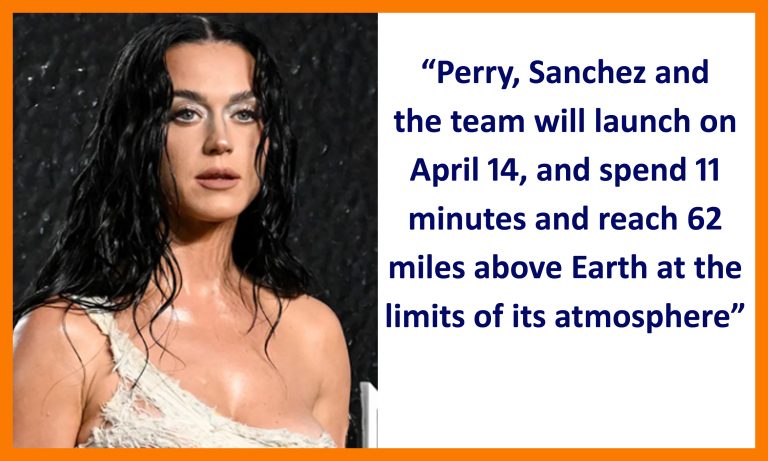Hookup Culture vs. Emotional Intimacy: Can You Have Both?
In the modern landscape of relationships, one of the most pressing and frequently debated questions is whether hookup culture and emotional intimacy can coexist. With dating apps like Tinder, Bumble, and Hinge normalizing casual encounters, and a growing generational focus on individualism and exploration, hookup culture has firmly embedded itself into the fabric of contemporary dating. At the same time, the desire for meaningful emotional connections hasn’t vanished. In fact, it might be stronger than ever.
So, can you have both — the spontaneity and physical gratification of hookup culture and the depth and security of emotional intimacy? Or are they inherently at odds? This article explores the roots of hookup culture, the nature of emotional intimacy, the psychological and social implications of each, and whether these seemingly opposing dynamics can blend into a fulfilling romantic experience.
Understanding Hookup Culture
Hookup culture generally refers to a social environment that accepts and encourages casual sexual encounters without necessarily including emotional bonding or long-term commitment. It is often associated with college campuses, dating apps, nightlife scenes, and youth culture more broadly.
Hookups can range from one-night stands to friends with benefits (FWB) arrangements. The key characteristic is that they are primarily physical and are not rooted in traditional romantic ideals or expectations.
What drives hookup culture?
Several societal and psychological factors contribute to the rise and prevalence of hookup culture:
- Technology: Dating apps have revolutionized how people meet, often prioritizing physical attraction and proximity over shared values or emotional compatibility.
- Delayed Commitments: Millennials and Gen Z are often delaying marriage, careers, and even cohabitation, leading to more time spent exploring relationships.
- Sexual Liberation: Especially for women, the decline of sexual taboos has empowered more open exploration of sexuality.
- Cultural Shifts: There’s a broader societal emphasis on personal freedom, non-traditional relationships, and rejection of rigid norms.
- Convenience: Casual hookups offer the allure of intimacy without the emotional labor and time investment of a committed relationship.
Yet, while the appeal of casual sex is undeniable for many, its emotional ramifications can be complex.
The Need for Emotional Intimacy
Emotional intimacy refers to a deep sense of closeness, trust, and mutual understanding between individuals. It is the glue of enduring romantic relationships, built over time through vulnerability, shared experiences, and emotional availability.
Unlike physical intimacy, which can be experienced instantly, emotional intimacy demands consistent effort, presence, and trust-building. It means being seen and accepted for who you are — your fears, dreams, and imperfections — and offering the same space to another person.
Why emotional intimacy matters:
- Mental Health: Studies show that emotionally intimate relationships significantly improve psychological well-being.
- Longevity: Emotional closeness is a strong predictor of relationship satisfaction and longevity.
- Security: It offers a foundation of support and safety that casual interactions often lack.
- Self-Discovery: Through emotionally intimate relationships, individuals often come to understand themselves more deeply.
The Tension Between the Two
On the surface, hookup culture and emotional intimacy seem like polar opposites. One is based on minimal commitment, the other on deep investment. One encourages detachment; the other requires vulnerability.
Here are some ways the two can be in conflict:
1. Emotional Disconnection as a Norm
Many participants in hookup culture actively try to suppress emotional connections. They might follow unspoken rules like “don’t text after,” “don’t cuddle,” or “don’t stay the night” to maintain a boundary that keeps the interaction purely physical.
2. Avoidance of Vulnerability
Hookups often prioritize pleasure and self-gratification over understanding and emotional labor. The avoidance of vulnerability may offer short-term relief from emotional exposure but can lead to long-term feelings of emptiness or disconnection.
3. Conflicting Expectations
What starts as a hookup can sometimes lead to one person developing feelings, while the other remains emotionally detached. This mismatch often leads to heartbreak or confusion.
4. Stigma and Internal Conflict
Despite cultural acceptance, many individuals still feel shame or internal conflict after participating in hookup culture, especially when deeper emotional needs go unmet.
Can Hookups Lead to Emotional Intimacy?
Interestingly, the answer isn’t as black and white as it might seem. There is growing evidence — both anecdotal and academic — that hookups can lead to emotional intimacy, though the process is often non-linear and depends on several key factors.
1. Friends with Benefits (FWB) Models
In many FWB arrangements, emotional closeness does develop over time, especially when there is mutual respect, honesty, and ongoing communication. Some romantic relationships even begin this way.
2. Communication is Crucial
When individuals clearly communicate their needs and boundaries — and remain open to evolving feelings — hookups can be the start of something emotionally fulfilling.
3. Mindset and Intentions
If both partners enter a hookup with openness to connection rather than a strict adherence to detachment, intimacy may naturally evolve.
4. Repetition Builds Familiarity
Repeated encounters with the same person can build comfort and familiarity, which are often precursors to emotional intimacy. The key is whether those interactions allow for vulnerability and deeper sharing.
Psychological Insights: What the Research Says
Numerous psychological studies have tried to assess the emotional impact of hookup culture. Here are some relevant findings:
- Mixed Emotional Outcomes: Some people report feeling empowered and sexually liberated after casual encounters; others feel regret or emotional dissatisfaction. Outcomes often depend on the individual’s personality, expectations, and the context of the hookup.
- Attachment Styles Matter: People with secure attachment styles are more likely to navigate hookup culture without negative emotional fallout. Those with anxious or avoidant styles may either seek emotional reassurance through hookups or avoid intimacy altogether.
- Gender Differences: Though the gender gap is narrowing, research still shows that women are more likely than men to develop emotional attachments after sex due to both social conditioning and biological responses (like oxytocin release).
- Intimacy in Casual Sex: A 2017 study found that some people do experience feelings of closeness and emotional connection during casual sex — particularly when the experience is positive and respectful.
Blending Hookup Culture with Emotional Intimacy: Is It Possible?
Yes, but it requires intentionality, emotional intelligence, and mutual respect. Here’s how people are navigating this delicate balance in today’s dating landscape:
1. Redefining Relationship Labels
Many people are moving away from rigid definitions like “just a hookup” or “serious relationship.” Instead, they focus on what works for them — even if that means building emotional intimacy with someone they’re not “officially” dating.
2. Open Relationships and Ethical Non-Monogamy
Some individuals and couples explore emotional and physical connections with multiple people while maintaining honesty and transparency. For them, emotional intimacy and sexual freedom are not mutually exclusive.
3. Conscious Hookups
This involves approaching casual encounters with awareness and intention — making sure both parties are on the same page about what they want and are open to what might evolve emotionally.
4. Mutual Vulnerability
Even within casual contexts, partners can make room for authentic sharing. Asking deeper questions, showing care, and respecting boundaries can lay the groundwork for emotional closeness without pressure to define the relationship rigidly.
Risks and Pitfalls
Trying to blend hookup culture with emotional intimacy isn’t without challenges. Here are some potential risks:
- Unreciprocated Feelings: One person may catch feelings while the other remains detached, leading to emotional pain.
- Blurred Boundaries: Emotional intimacy without commitment can become confusing, especially when expectations aren’t clearly communicated.
- Attachment Issues: Casual relationships may trigger old wounds or reinforce unhealthy attachment patterns, especially if there’s a history of emotional unavailability.
- Societal Judgments: Despite progress, there’s still stigma around casual sex and non-traditional relationships, which can create internal or external pressure.
Building a Culture That Honors Both
To create a relationship culture where both hookups and emotional intimacy can coexist meaningfully, several shifts are necessary:
- Normalize Emotional Honesty: Encourage open conversations about feelings, even in casual contexts.
- Destigmatize Non-Traditional Models: Validate all relationship types — monogamous, polyamorous, casual, committed — as long as they are consensual and respectful.
- Promote Emotional Literacy: Teach people how to recognize and articulate their emotional needs, especially in romantic or sexual contexts.
- Redefine Masculinity and Femininity: Break down gender stereotypes that associate emotional detachment with strength and vulnerability with weakness.
- Consent Beyond the Physical: Make emotional consent — clarity about emotional intentions — part of the conversation around sexual encounters.
Conclusion: A New Romantic Paradigm?
The dichotomy between hookup culture and emotional intimacy is not as rigid as it may seem. While casual sex has traditionally been viewed as antithetical to emotional closeness, today’s evolving relational dynamics suggest otherwise.
With clear communication, emotional intelligence, and mutual respect, it is entirely possible to foster emotional intimacy even in non-traditional or casual settings. In fact, doing so may offer a more expansive, flexible model for love and connection — one that honors both autonomy and attachment.
As we continue to redefine relationships in the 21st century, the goal should not be to choose between hookup culture and emotional intimacy, but to create space for both, depending on what






